Disclaimer
Thomas Couture
French Academic Classical Painter, History Painter, Portraitist & Teacher
1815 - 1879
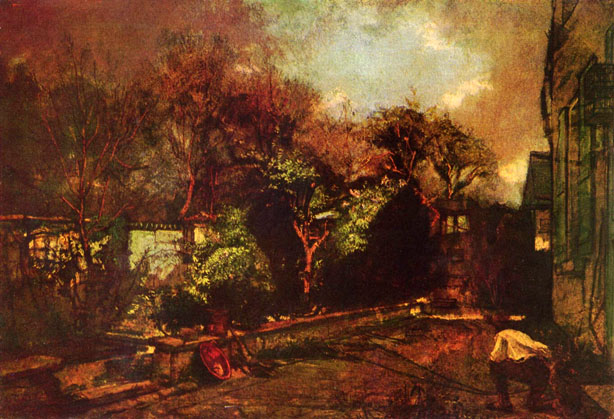
"Knowing how to paint and to use one's colors rightly has not any connection with originality. This originality consists in properly expressing your own impressions."
"There is only one absinthe drinker, and that's the man who painted this idiotic picture."
~ Thomas Couture
Thomas Couture (December 21, 1815 - March 30, 1879) was an influential French history painter and teacher.
He was born at Senlis Oise, France and at age 11, Thomas Couture's family moved to Paris where he would study at the industrial arts school (École des Arts et Métiers) and later at the École des Beaux-Arts. He failed the prestigious Prix de Rome competition at the École six times, but he felt the problem was with the École, not himself. Couture finally did win the prize in 1837.
In 1840, he began exhibiting historical and genre pictures at the Paris Salon, earning several medals for his works, in particular for his 1847 masterpiece, "Romans in the Decadence of the Empire." Shortly after this success, Couture opened an independent atelier meant to challenge the École des Beaux-Arts by turning out the best new history painters.
Romans in the Decadence of the Empire: 1847
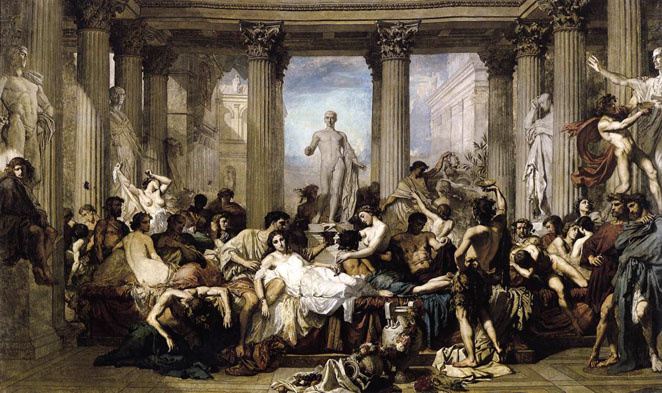
Couture's innovative technique gained much attention, and he received Government and Church commissions for murals during the late 1840's through the 1850's. However, he never completed the first two commissions, while the third met with mixed criticism. Upset by the unfavorable reception of his murals, in 1860 he left Paris, for a time returning to his hometown of Senlis, where he continued to teach young artists who came to him. In 1867 he thumbed his nose at the academic establishment by publishing a book on his own ideas and working methods.
Couture taught such later luminaries of the art world as Edouard Manet, Henri Fantin-Latour, and Pierre Puvis de Chavannes.
Asked by a publisher to do an autobiography, Thomas Couture responded "Biography is the exaltation of personality - and personality is the scourge of our time."
Couture died at Villiers-le-Bel, Val-d'Oise, and was interred in the Père Lachaise Cemetery, Paris, France.
A Judge Going to Court
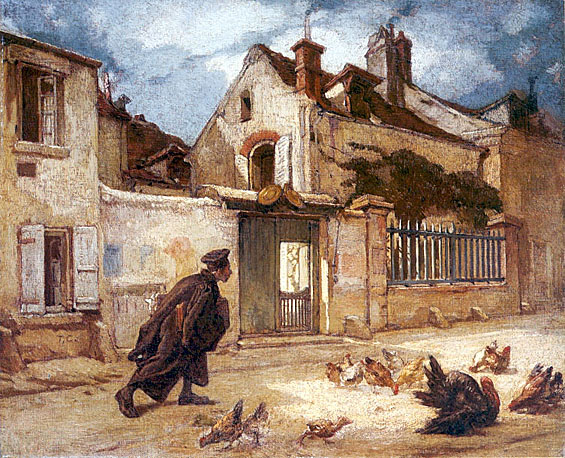
A Realist
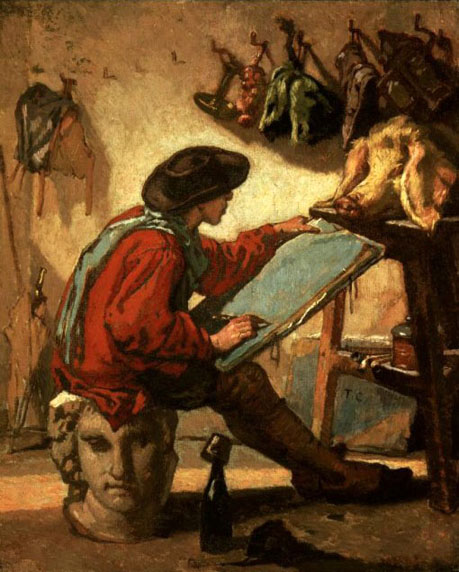
This painting can be viewed as a painted caricature of Realism. The French artist Thomas Couture used the canvas to criticize the new direction in painting, whose adherents preferred every day, and sometimes trivial, subjects, to literary or historical themes. This particular realist has 'demeaned' himself to such an extent that he is willing to portray a pig, a symbol of stupidity. Insignificant, everyday objects hang on the wall while the painter displays scant respect for classical culture: he is seated on a sculpted head of the Greek god Zeus. Couture himself generally painted more exalted subjects, in a style better suited to the academic tradition.
A Widow: 1840
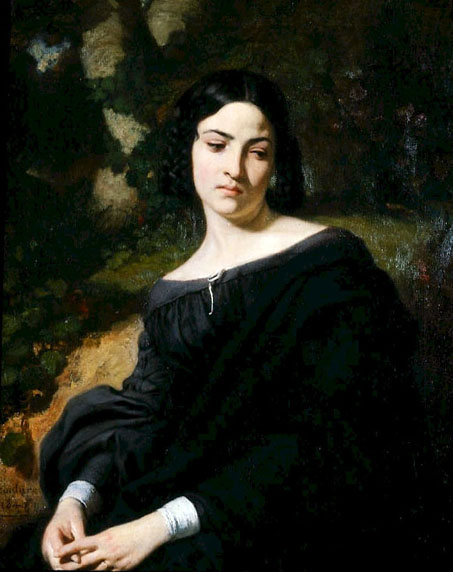
Anselm Feuerbach: 1852

He was the first to realize the danger arising from contempt of technique, that mastery of craftsmanship was needed to express even the loftiest ideas, and that an ill-drawn colored cartoon can never be the supreme achievement in art.
After having passed through the art schools of Düsseldorf and Munich, he went to Antwerp and subsequently to Paris, where he benefited by the teaching of Couture, and produced his first masterpiece, Hafiz at the Fountain in 1852.
Autumn

Baronne d'Astier de la Vigerie
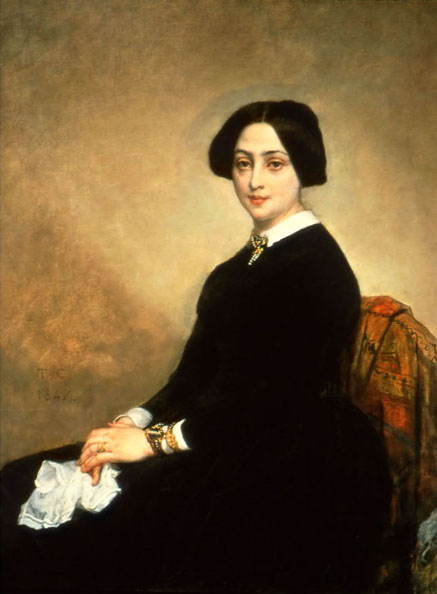
Eleve Americaine Peignant
(American Pupil Painting)
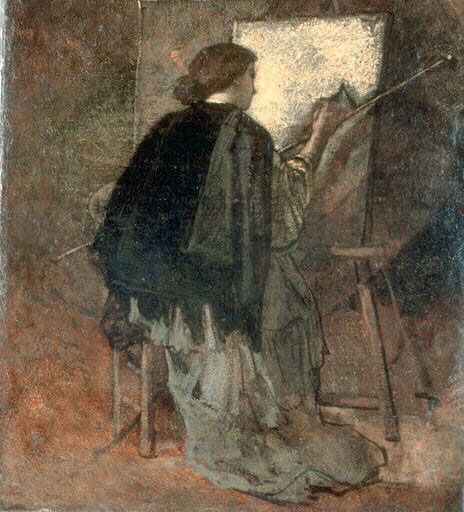
Etude de Jeune Fille
(Study of a Young Girl)
.jpg)
Female Head

Reverie
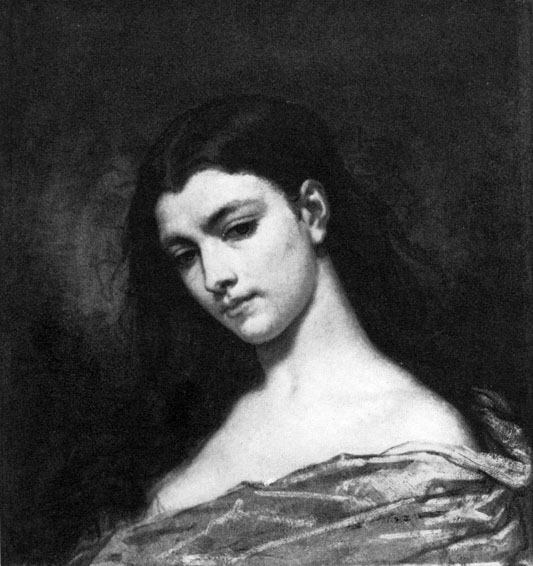
French Volunteer
(Study for the Enrollment)
.jpg)
Drummer Boy: 1857
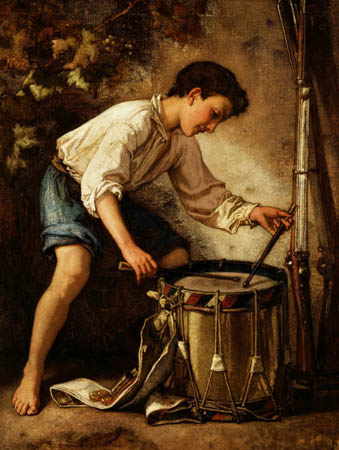
Family Group: 1866
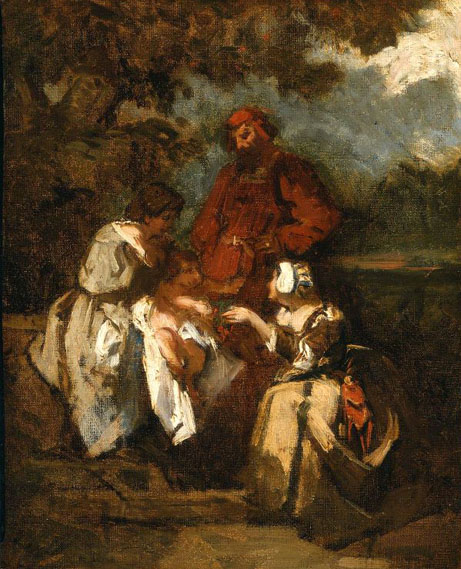
Head of a Woman: 1876
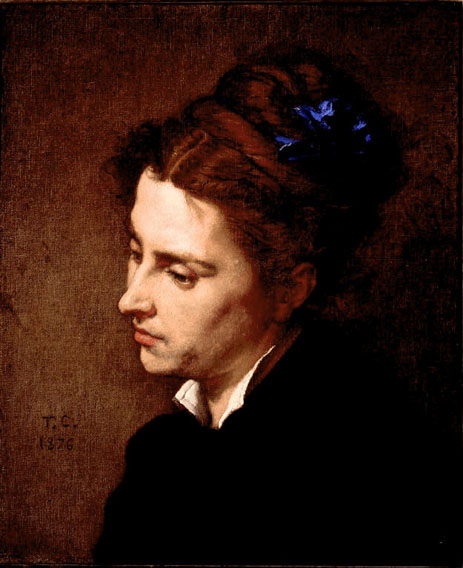
Head of a Woman (Study): 1876
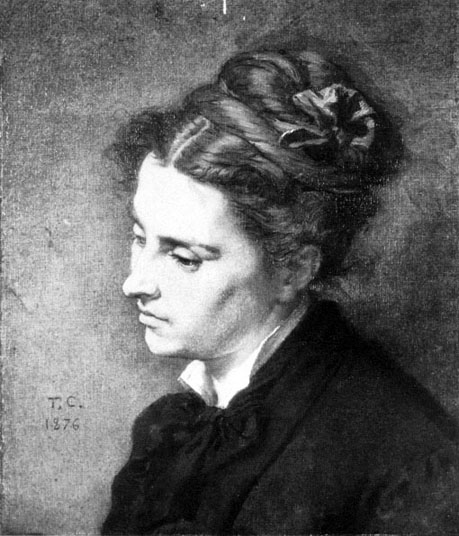
Head of a Woman: ca 1853
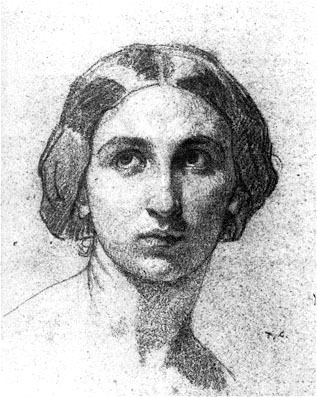
Head of a Young Woman
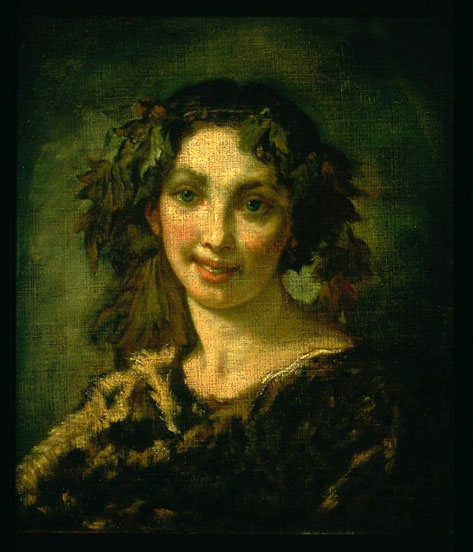
Head of an Epochal King
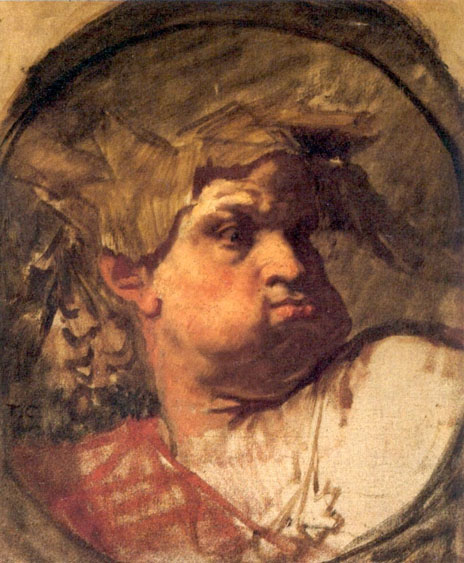
Henri Didier: 1843-44
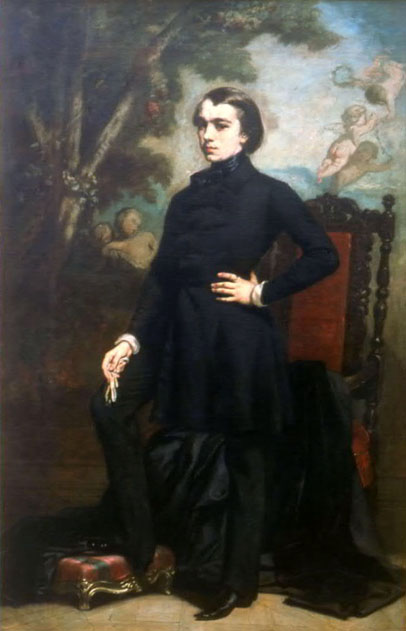
Jocondo

Jules Michelet
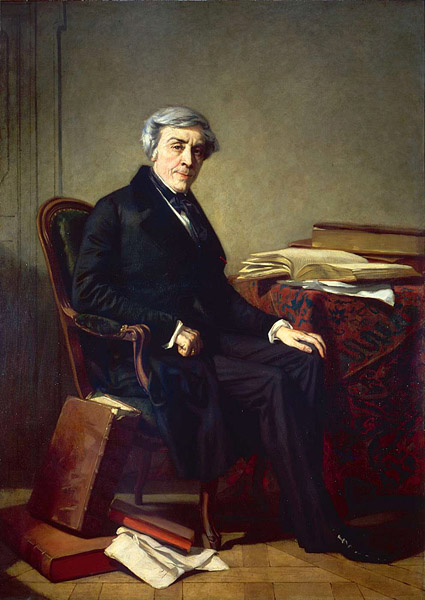
"The historian's first duties are sacrilege and the mocking of false gods. They are his indispensable instruments for establishing the truth."
~ Jules Michelet
Jules Michelet , 1798-1874, French writer, the greatest historian of the romantic school. Born in Paris of poor parents, he visualized himself throughout his life as a champion of the people. He headed the historical section of the national archives and was professor of history at the Collège de France, but he lost his positions when he refused (1851) the oath of allegiance to Louis Napoleon (later Napoleon III). His major work is his Histoire de France (many volumes, 1833-67; several partial translations into English); its style, its emotional strength, and its powerful evocation make it a masterpiece of French literature. Michelet traced the biography of the nation as a whole, instead of concentrating on persons or groups of persons. His most convincing pages deal with the Middle Ages. Michelet had vast knowledge of factual detail and original documents, but his history, especially the latter part, is marred by emotional bias against the clergy, the nobility, and the monarchic institutions. Many of Michelet's other political and historical works are outgrowths of his history of France; especially notable are Le Peuple (1846) and the biography of Joan of Arc (1853). He also wrote romantic impressions of nature and life.
La Joueur de Cormeuse
(The Player of Cormeuse): 1877
_1877.jpg)
Landscape near the Sea: 1876
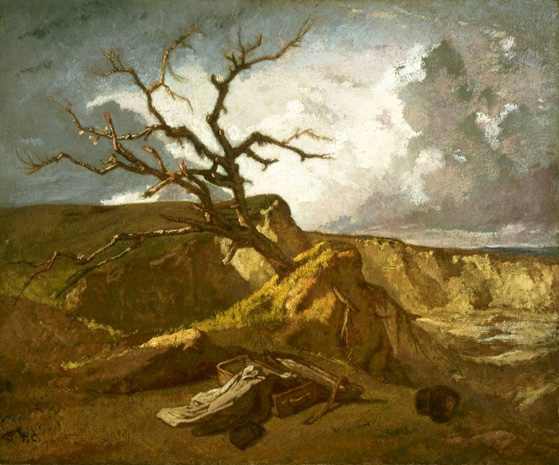
Le Baiser de Judas
(The Kiss of Judas)
.jpg)
Le Conventionnel
(Study for the Enrollment)
.jpg)
Madame de Brunecke
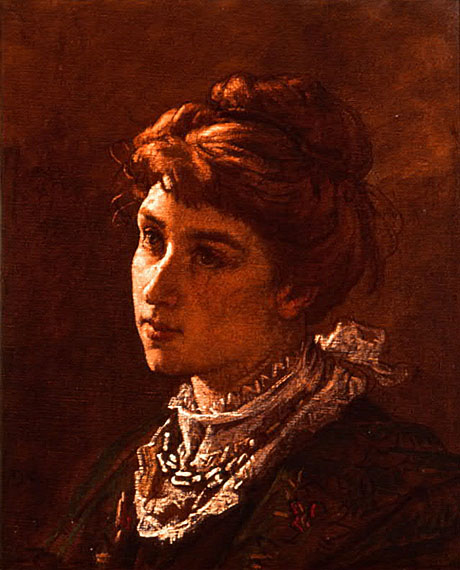
Pierrot on Trial: ca 1863
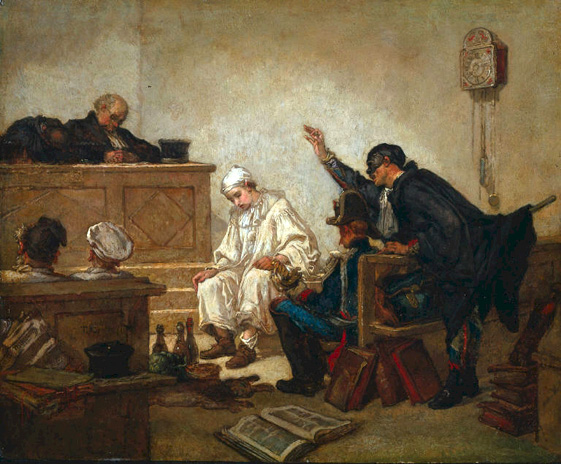
In this painting, Couture used two famous masked characters, Pierrot and Harlequin, to satirize and critique the public and the judicial system of the 19th century. The pathetic Pierrot represents a lower-class fool on trial for stealing food from a restaurant. The stolen items are depicted lying on the courtroom floor as an indictment of his guilt. His accusers sit on the left, while Harlequin, his lawyer, argues theatrically for the defense. The artist's contempt for the legal profession and the court system is plain in the figures of the sleeping judges. A mid-19th-century observer may have sympathized with Pierrot, who for his own survival cunningly subverts authority in order to satisfy his needs.
Pierrot the Politician: 1857
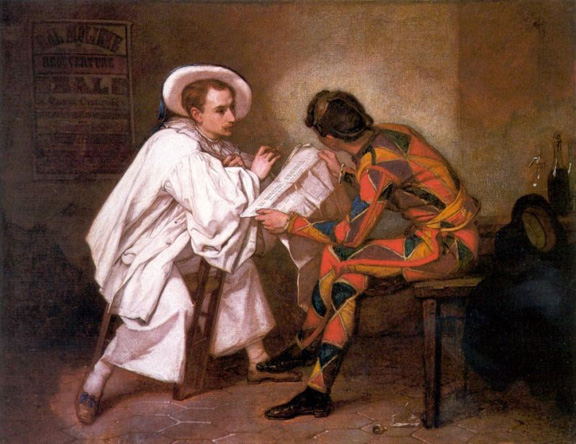
Pifferaro et Son Fils
(Piper and his Son)
.jpg)
Portrait de l'architecte Emile Gilbert
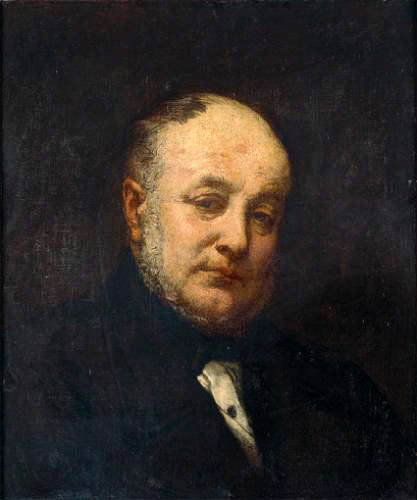
Portrait de Mademoiselle Florentin: 1844
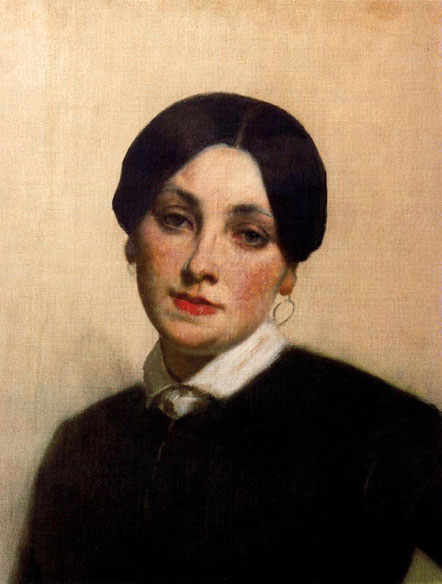
Portrait of a Girl
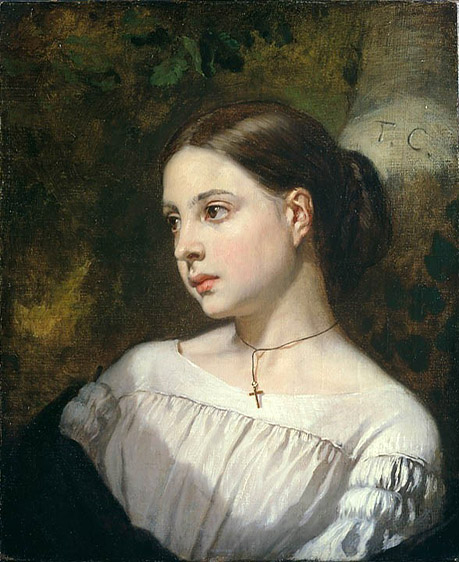
Portrait of a Lady
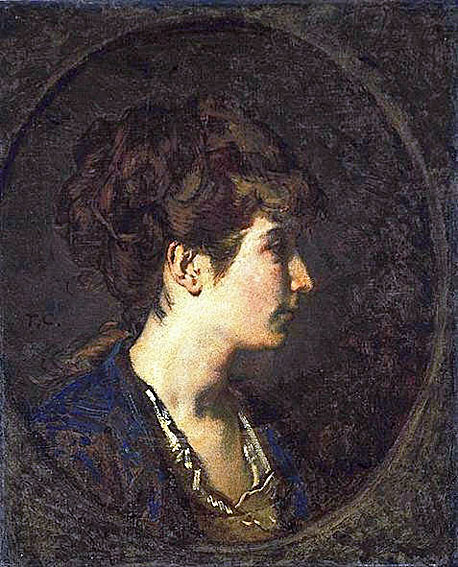
Portrait of a Man: 1841
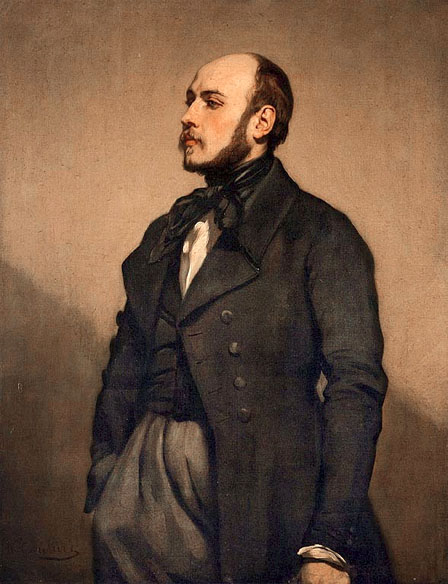
Portrait of a Man: ca 1853

Portrait of a Woman: Early 1850's
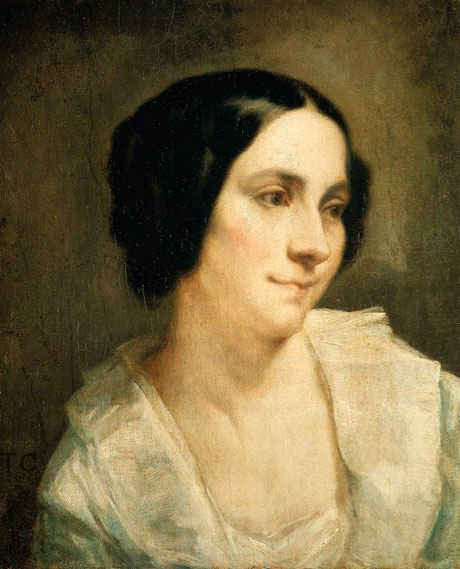
Portrait of Philip Ricord
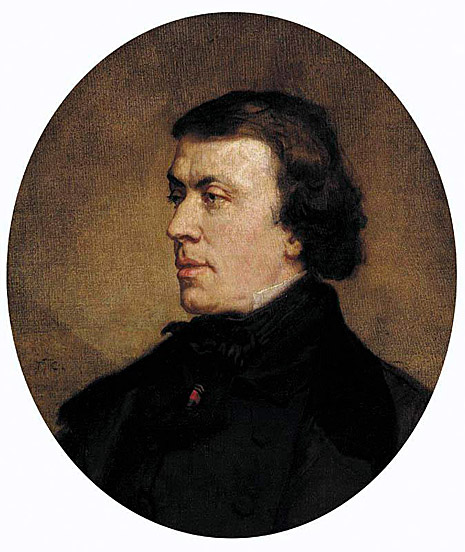
Portrait of the Artist
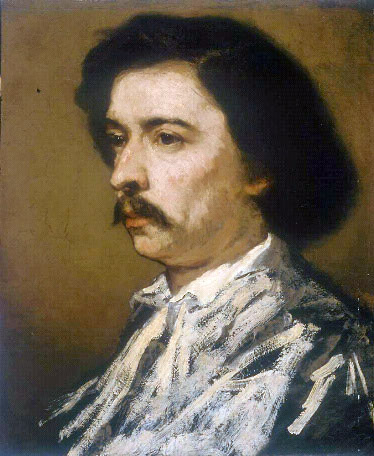
Portrait of the Artist
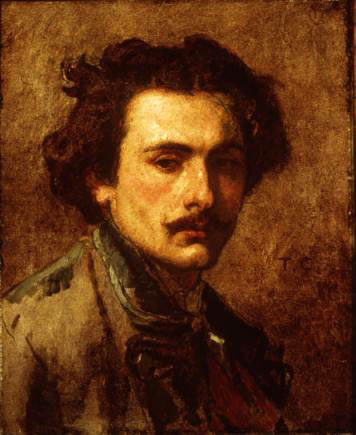
Portrait of Zelie Courbet
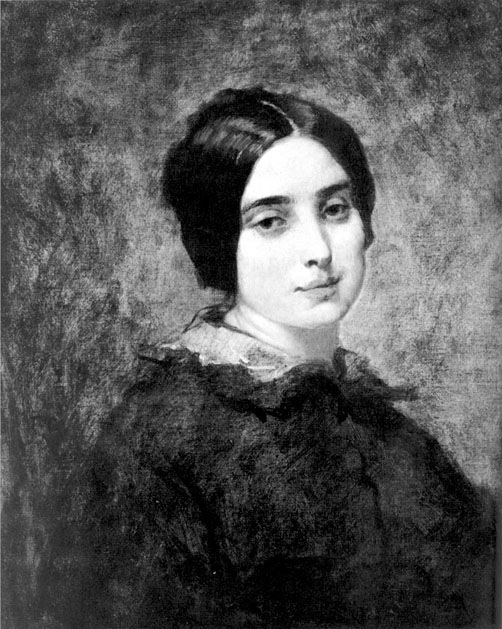
Return from the Fields: 1841
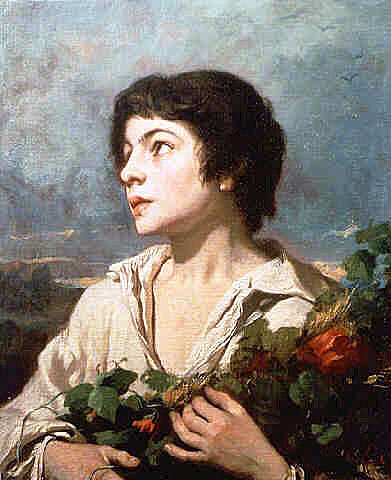
Roman Youth: 1854
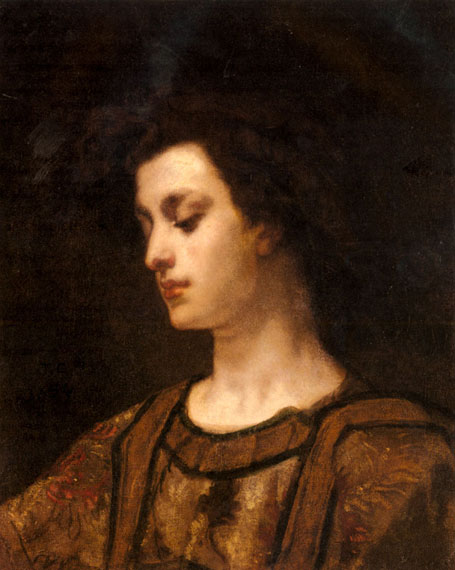
Self-Portrait: ca 1847
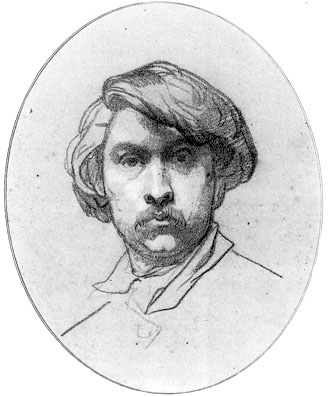
Soap Bubbles
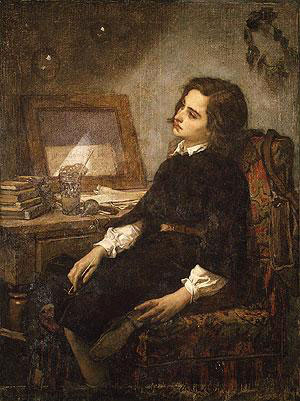
Couture triumphed at the Salon of 1847 with his "Romans of the Decadence" (Musée d'Orsay, Paris), a monumental canvas whose depiction of a Roman orgy was interpreted as a satire of the corrupt regime of the July Monarchy (1830-48). With "Soap Bubbles," he reused a traditional vanitas image: the bubbles symbolize the transience of life, while the wilting laurel wreath on the wall suggests the fleeting nature of praise and honors. The word "immortalité," inscribed on the paper inserted in the framed mirror, reinforces the painting's allegorical content. In 1867, Édouard Manet, who studied in Couture's Paris atelier, painted "Boy Blowing Bubbles" (Museu Calouste Gulbenkian, Lisbon), which, although recalling Couture's precedent, counters his master's allegory with an emphatically naturalistic portrayal.
Study For L'Amour De L'Or: 1844
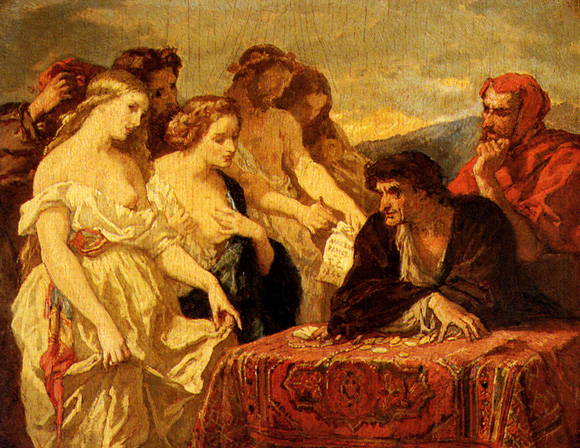
Study for the Marriage of Harlequin
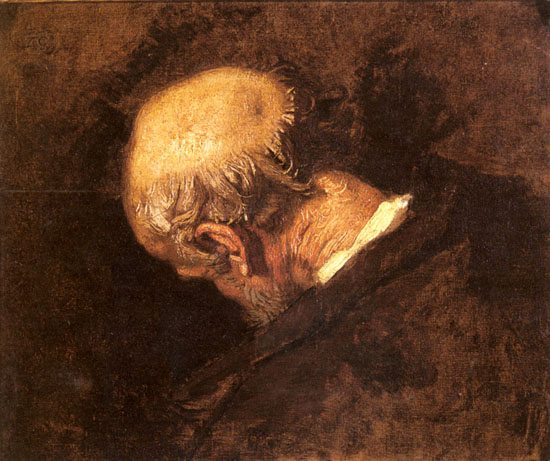
Study of a Lame Man
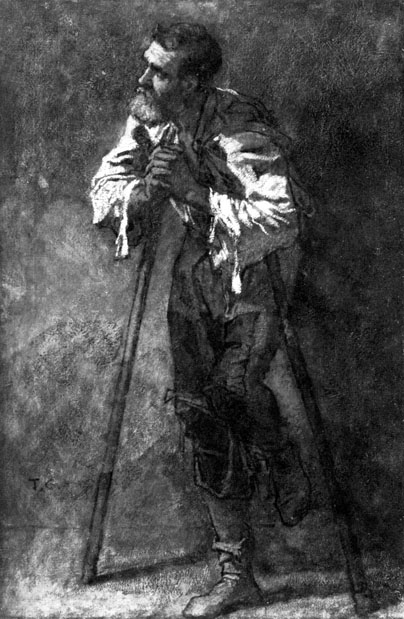
Study of a Nude
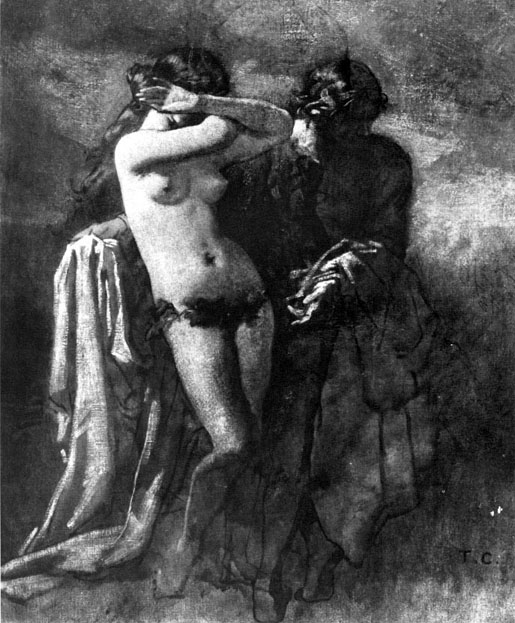
Supper after the Masked Ball
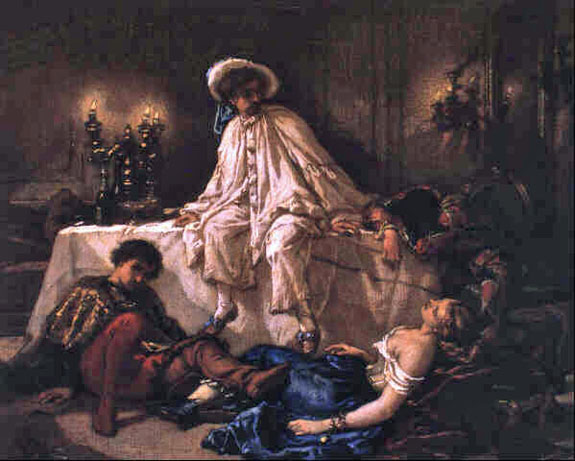
The Duel after the Masked Ball: 1857

The Artist's Daughter: 1878

The Bird Catcher
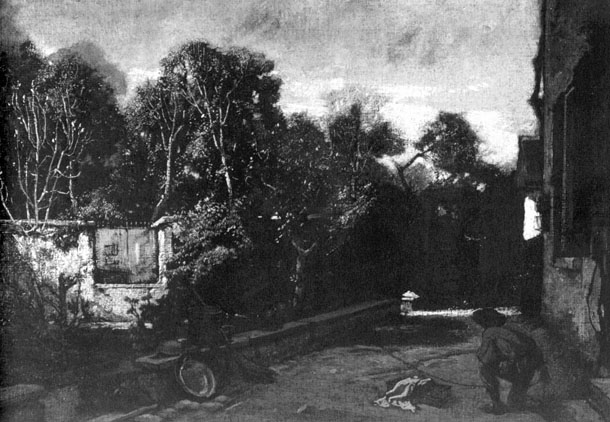
The Enrollment of the Volunteers of 1792 (Unfinished)
_Two.jpg)
A Soldier Facing Front: 1792
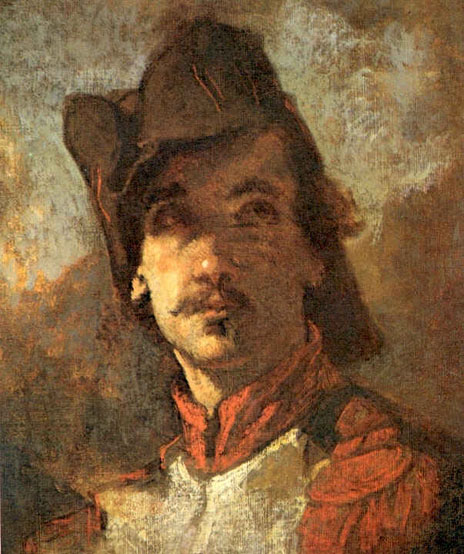
The Falconer: 1855

The Fugitive
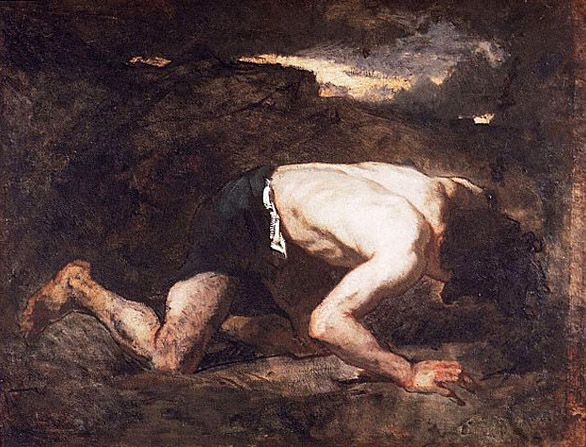
The Little Bather: 1849
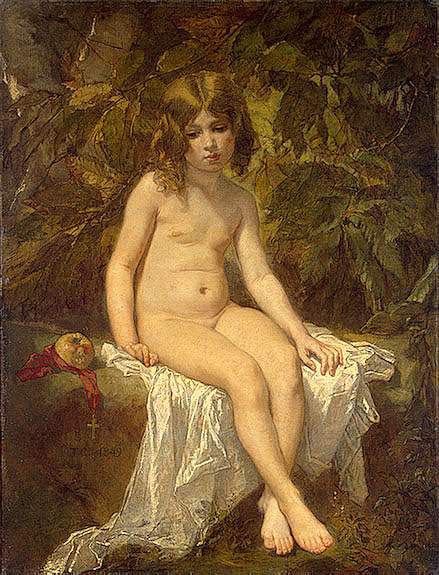
The Little Confectioner: ca 1878
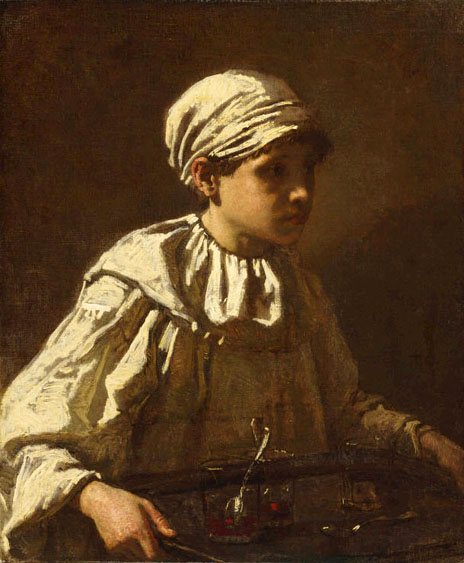
The Love of Gold: 1844

The Love of Gold, 1844 by Thomas Couture (1815-79)
Faust by Wolfgang van Goethe (1749-1832) 99: L´Amour de l´or Mephistopheles coins money Martha Marguerite pearls male female bare breasts representative of Satan temptation tempting greed envy avarice.
The Madman
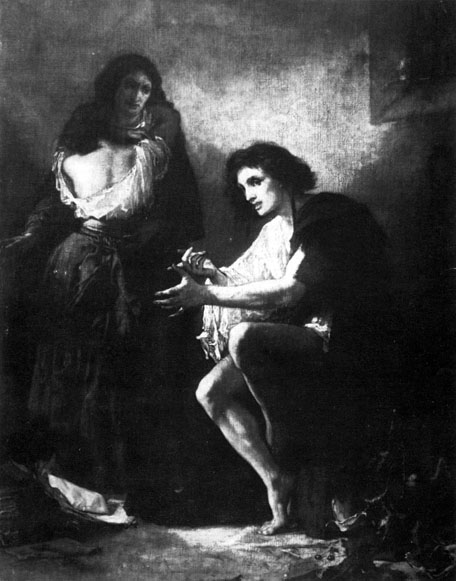
The Miser
(Study for Timon of Athens): ca 1876
_ca_1876.jpg)
Timon of Athens
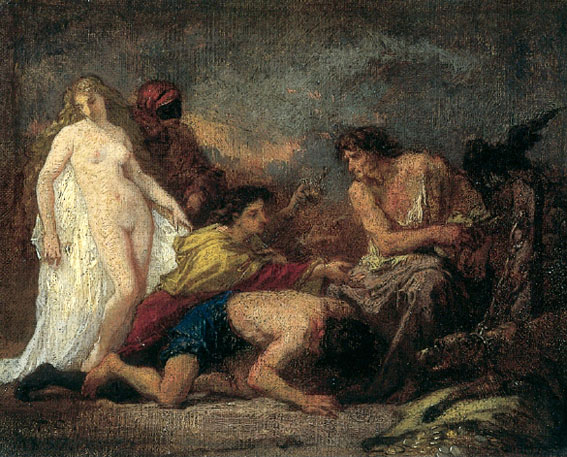
The Life of Timon of Athens is a play by William Shakespeare about the legendary Athenian misanthrope Timon (and probably influenced by the philosopher of the same name, as well), generally regarded as one of his most obscure and difficult works. Originally grouped with the tragedies, it is generally considered such, but some scholars group it with the problem comedies.
Timon of Athens by William Shakespeare. Search, Read, Study, Discuss
Horace and Lydia: 1843
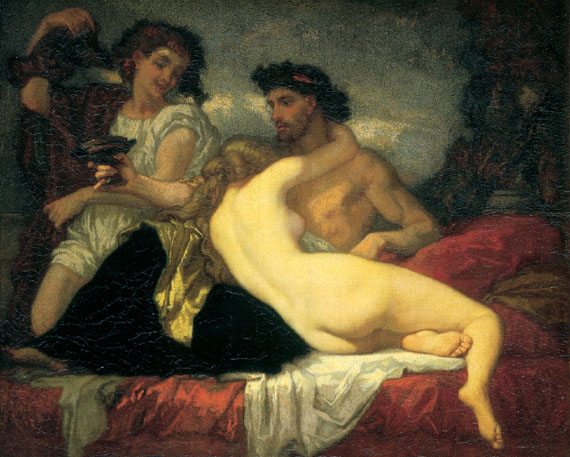
Ode 3.9
When Horace "Came Back"
HORACE
When I was your stiddy, my loveliest Lyddy,
And you my embraceable she,
In joys and diversions, the king of the Persians
Had nothing on me.
LYDIA
When I was the person you penned all that verse on,
Ere Chloe had caused you to sigh,
Not she whose cognomen is Ilia the Roman
Was happier than I.
HORACE
Ah, Chloe the Thracian -- whose sweet modulation
Of voice as she lilts to the lyre
Is sweeter and fairer? Would but the Fates spare her
I'd love to expire.
LYDIA
Tush! Calais claims me and wholly inflames me,
He pesters me never with rhymes;
If they should spare Cally, I'd perish totally
A couple of times.
HORACE
Suppose my affection in Lyddy's direction
Returned; that I gave the good-by
To Chloe the golden, and back to the olden?
I pause for reply.
LYDIA
Cheer up, mine ensnarer! Be Calais fairer
Than stars, be you blustery and base,
I'll love you, adore you; in brief, I am for you
All over the place.
T Tepedarium
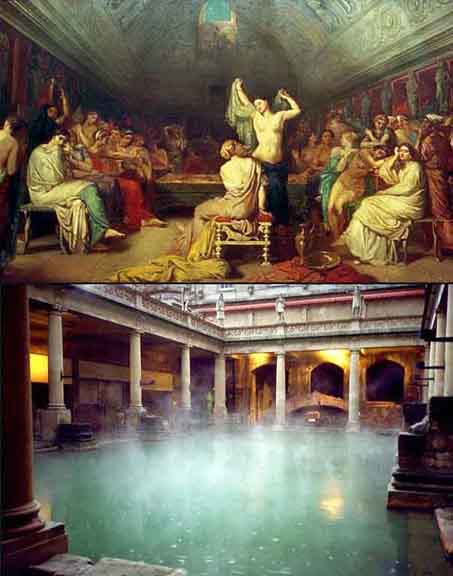
The upper image is a 19th century painting showing one of the favorite Roman pastimes: the public baths. Baths served as social centers as well as places for bathing. All citizens were allowed entry into the baths and special hours were reserved for women.
Wherever the Romans conquered, they tried to reconstruct the amenities of Rome: markets, basilicas, theaters and amphitheaters. Public baths played an important role in the life of every civilized Roman. Therefore, the Romans in distant England constructed a public bath establishment that took advantage of natural hot springs. The natural hot springs were a great blessing for the environment, for in areas where there were no natural hot springs, trees needed to be cut at a great rate in order to heat the baths.
The baths continued to function over the centuries, and in the 18th century, Bath was a favorite gathering place of the English upper classes. The baths have recently been drained, restored, and opened again for business.
Tepedarium
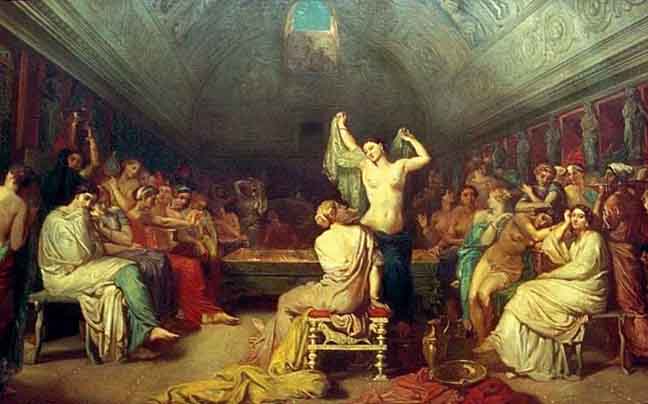
The Prodigal Son
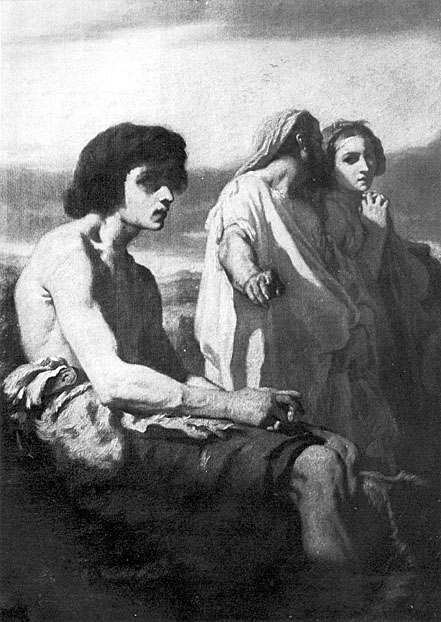
The Realist (Study): 1865
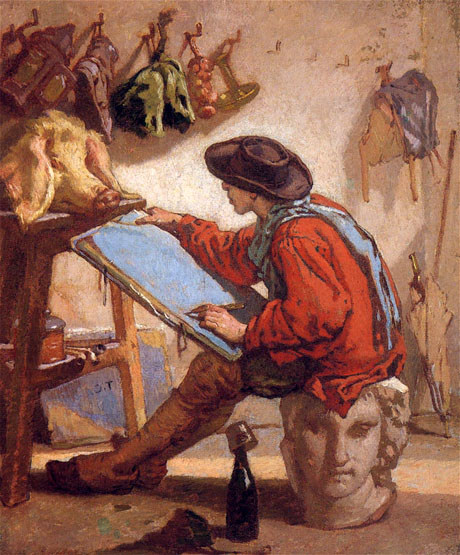
This painting can be viewed as a painted caricature of Realism. The French artist Thomas Couture used the canvas to criticize the new direction in painting, whose adherents preferred every day, and sometimes trivial, subjects, to literary or historical themes. This particular realist has 'demeaned' himself to such an extent that he is willing to portray a pig, a symbol of stupidity. Insignificant, everyday objects hang on the wall while the painter displays scant respect for classical culture: he is seated on a sculpted head of the Greek god Zeus. Couture himself generally painted more exalted subjects, in a style better suited to the academic tradition.
Young Venetian After an Orgy
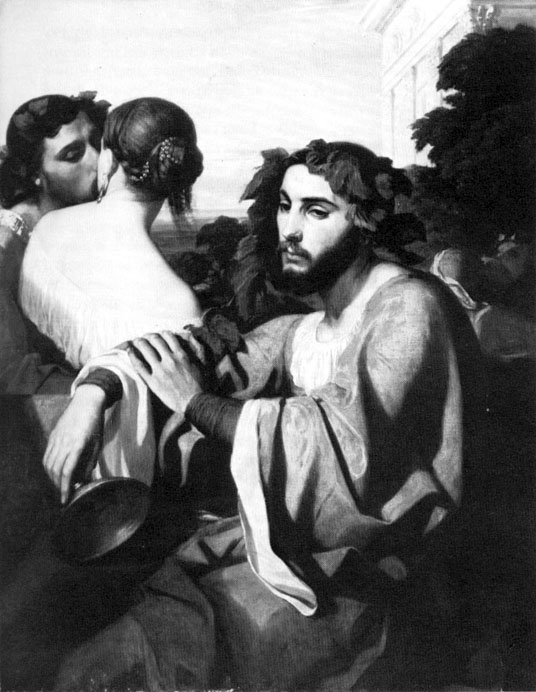
Young Woman Sewing: 1870
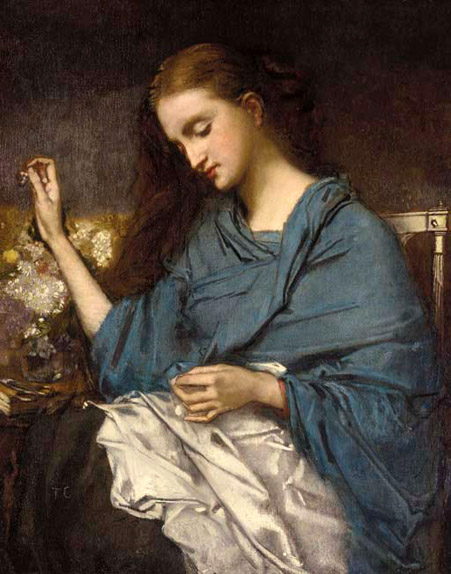
The Thorny Path: 1873
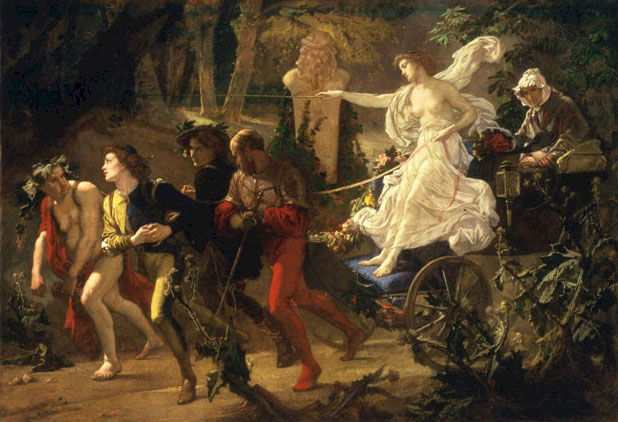
The Thorny Path is Couture's satire of decadent French society. A courtesan drives a carriage pulled not by animals but by four male captives who represent different ages and states of society. The naked old man leading the procession is flabby from indulgence; the troubadour following him, a symbol of young love, parodies the medieval ballads popular in nineteenth century France. The old soldier bends his head in self-reproach, and the young student writes as he walks, symbolizing the educated nobility's ignorance of the realities of daily life. The thistles and thorny plants along the road suggest the painfulness of their journey. The decrepit figure seated at the rear of the carriage with a bottle of wine in her basket foreshadows the courtesan's future. Finally, Couture signed his initials on the stone figure at center, which seems to be laughing at the entourage.
The Romans of the Decadence: 1847
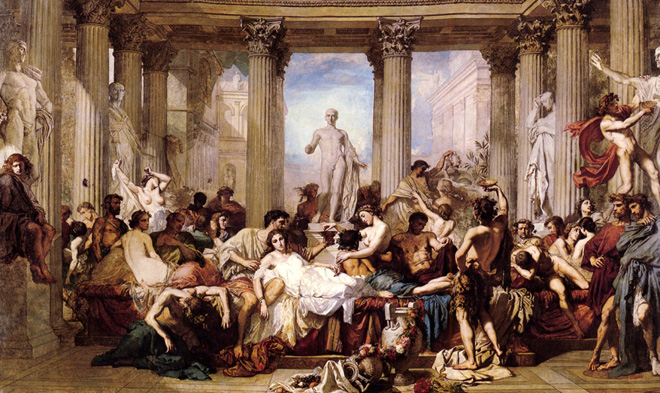
The peak in theatrical Romanticism came in the Salon of 1847, Couture, a pupil of Gros, exhibited this painting nearly eight meters long. It had been commissioned by the government for the Palais du Luxembourg. One can see the work as the sum of all that French painting had striven for between the Neoclassical period and Romanticism. Not only does the work cite painterly and compositional devices from old masters like Veronese, Tiepolo, Rubens and Poussin, but to Couture's contemporaries the artist also seemed to have succeeded in combining Antiquity and the present. It is all to be found united here: the antique columned hall, sculpture competing with living figures, beautiful forms created with line in the manner of Ingres, and Delaroche's delight in detail.
A woman is the central figure, placed so that she will draw all eyes. She is stretched out in the middle of a large crowd of people who are abandoning themselves to all the vices that are supposed to have led to the downfall of Roma. The scene is framed by five larger-than-life-size sculptures representing men from Roman history, their gestures seeming to demand a return to virtue.
The Romans of the Decadence (Detail): 1847
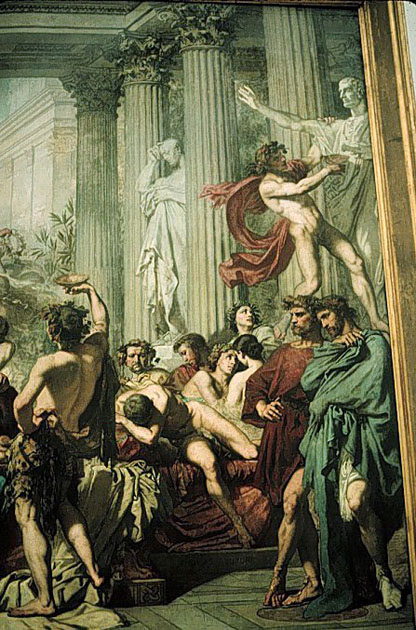
The Romans of the Decadence (Detail): 1847
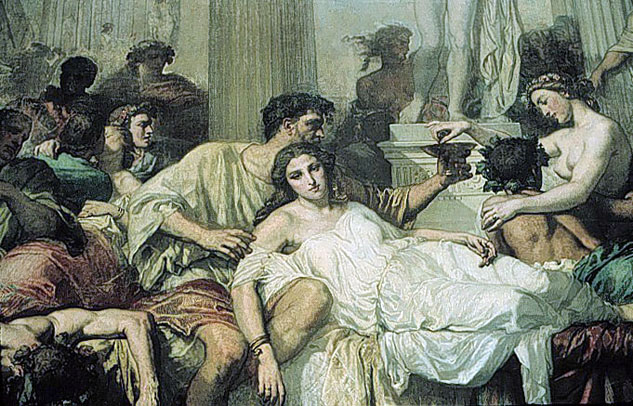
The Romans of the Decadence (Detail): 1847
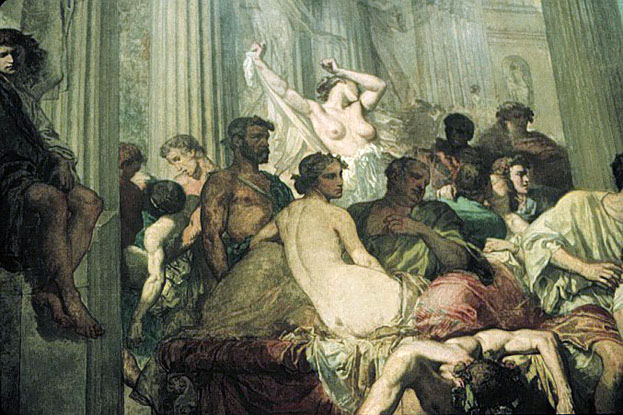
Source: Art Renewal Center
Source: Thomas Couture Online
This page is the work of Senex Magister
Return to Pagina Artis
Return to Bruce and Bobbie's Main Page.










.jpg)


.jpg)










_1877.jpg)

.jpg)
.jpg)



.jpg)























_Two.jpg)







_ca_1876.jpg)












